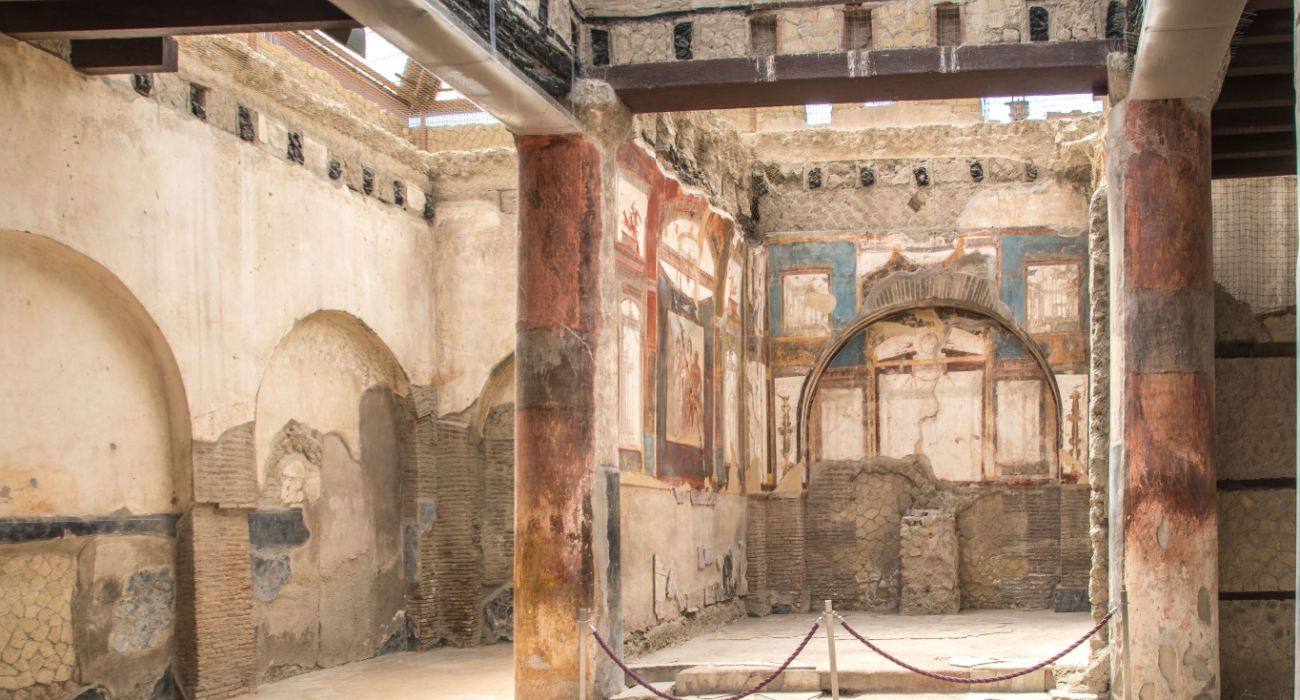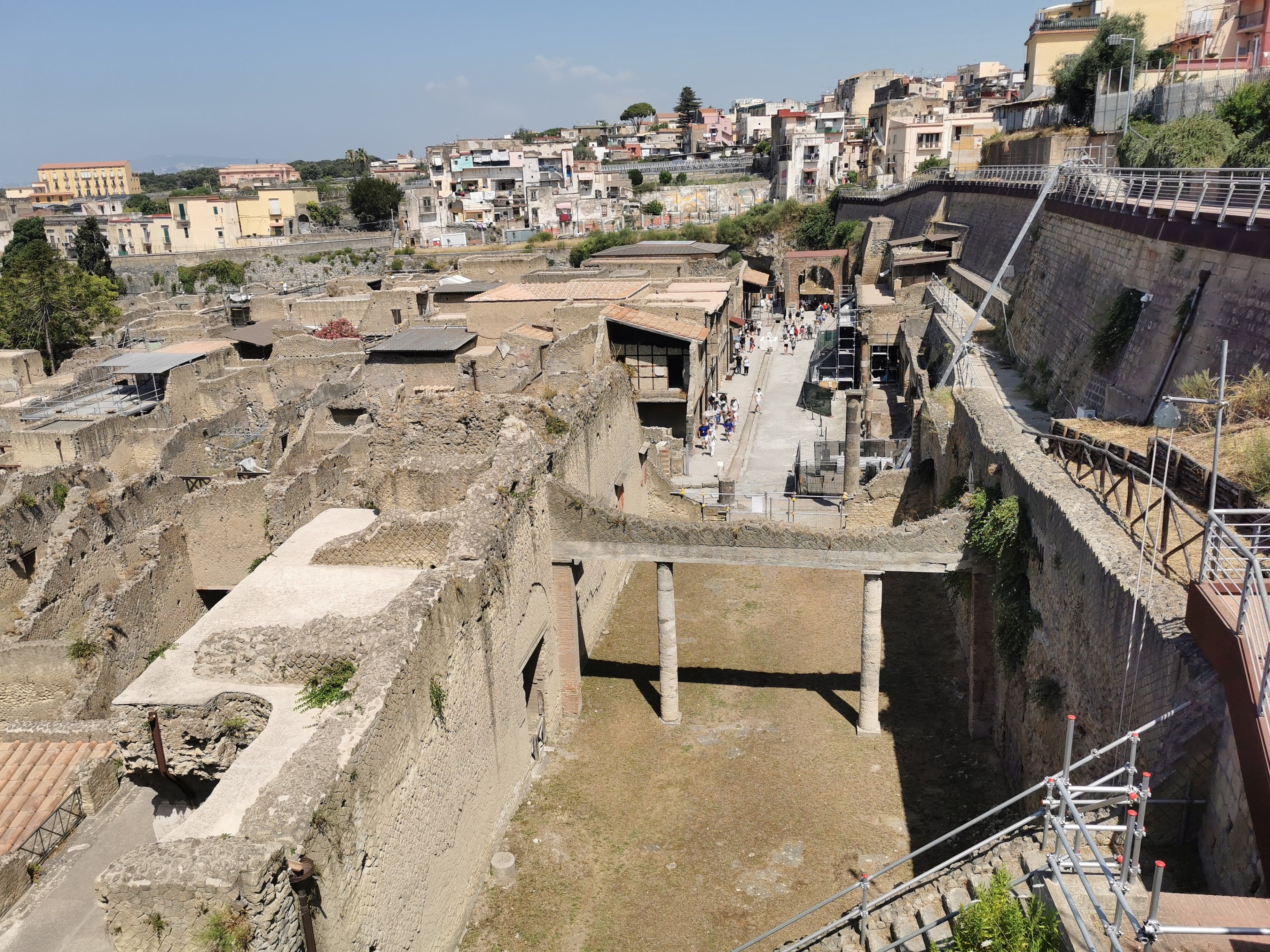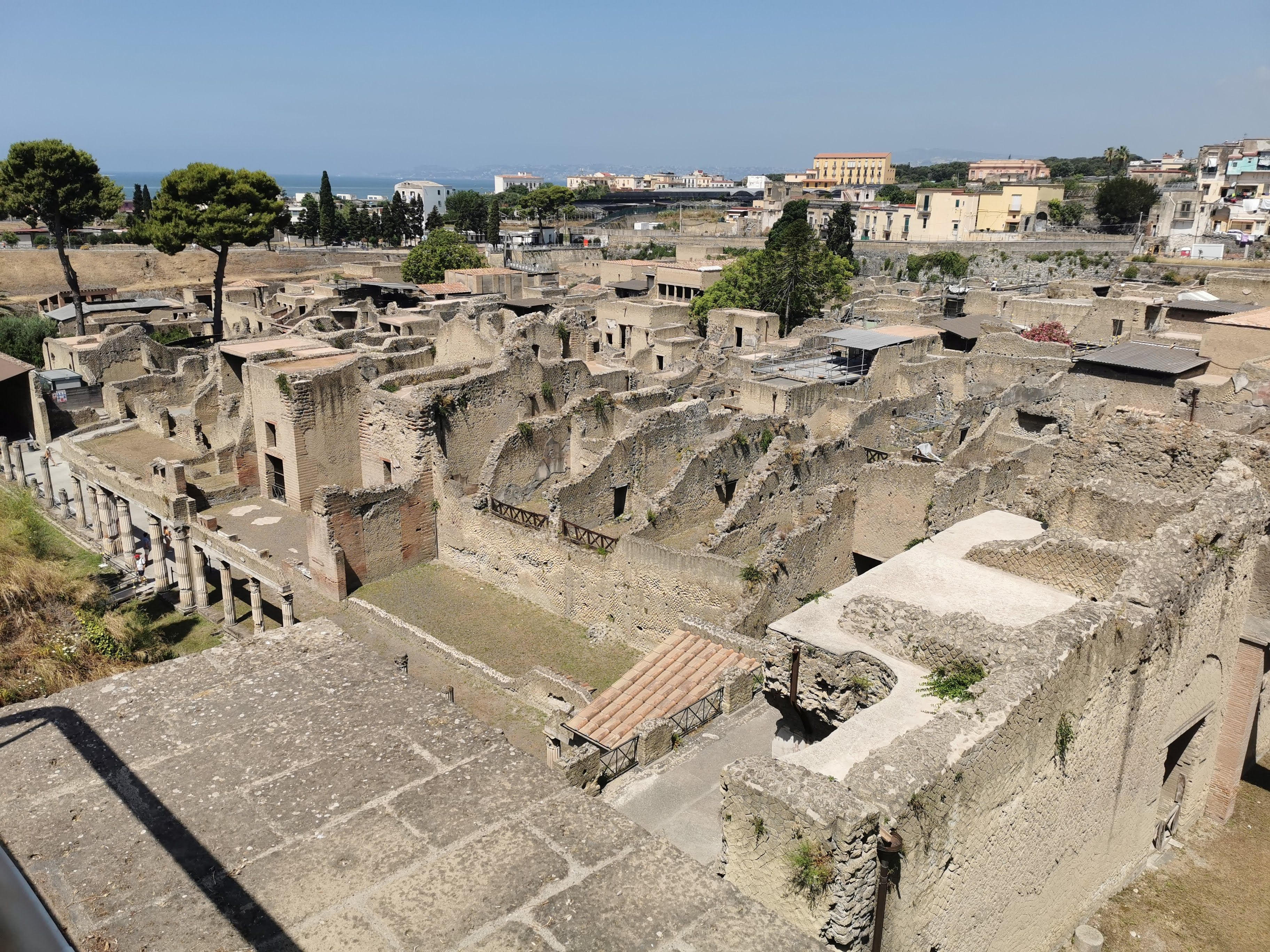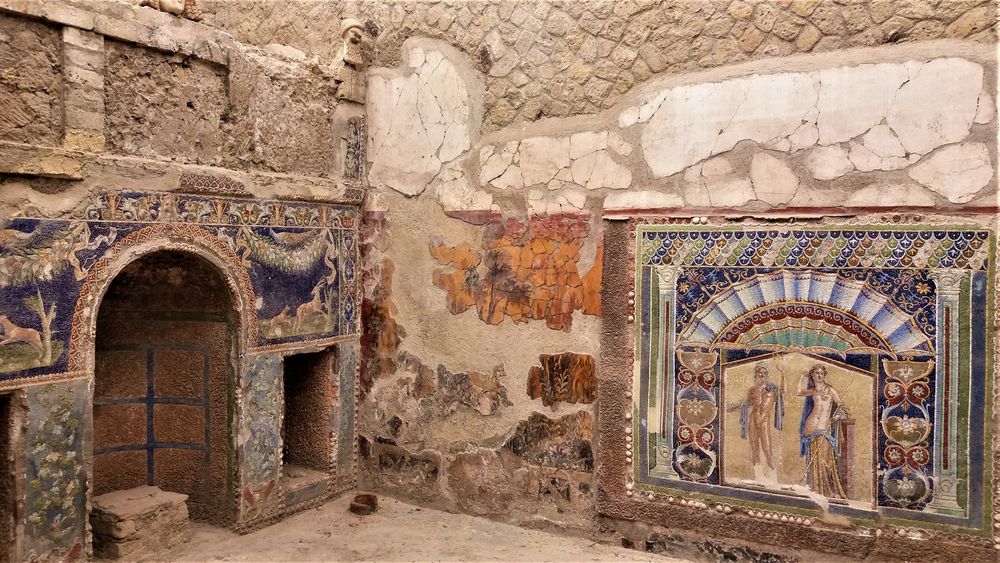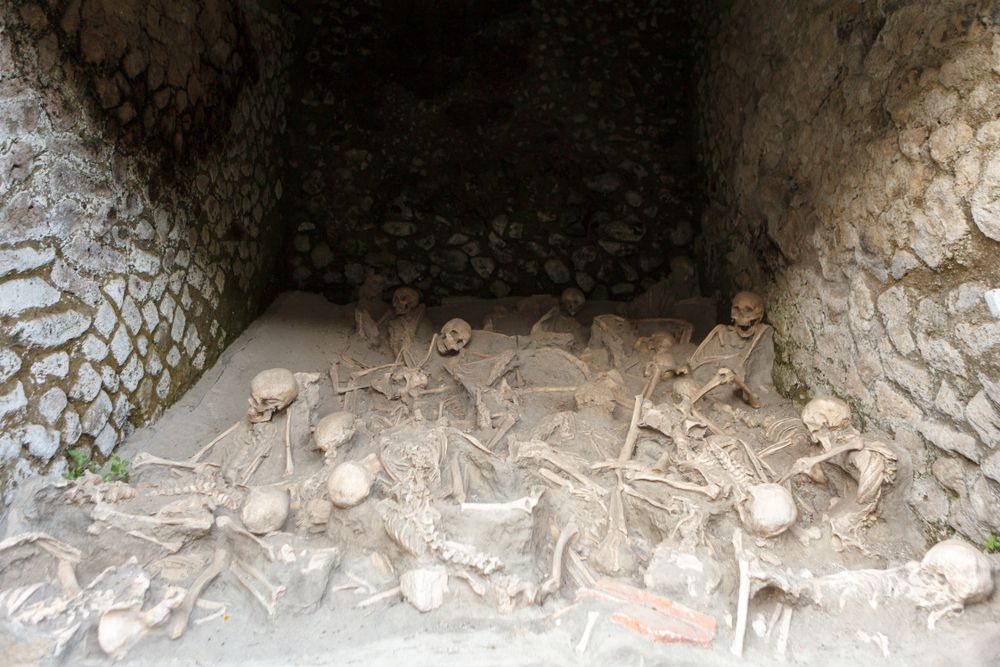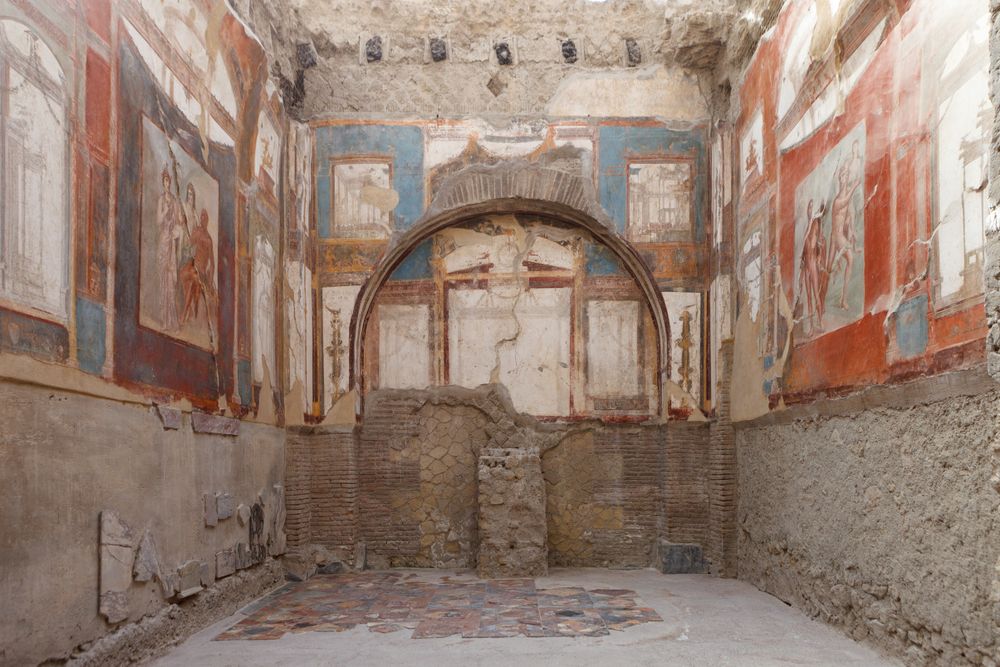Quick Links
Sometimes catastrophic disasters are the best for preserving a site for posterity — the ash-covered Roman city of Pompeii is perhaps the most famous example of that. Pompeii is massive and one of the best-preserved Roman cities in the world and is remarkably frozen in time. The site is ginormous, and it takes the better part of a day of exploring to see it. Most archeological sites only preserve parts of a citadel, but here much of the city is on display.
But Pompeii is arguably not even the best-preserved Roman city. A short distance from Pompeii is the remarkable Roman town of Herculaneum which met the same fate during the eruption of Vesuvius. The eruption of Vesuvius in AD 79 also buried the town of Herculaneum under a massive sheet of volcanic ash and pumice.
Herculaneum: The Coastal Resort Town Of The Wealthy Romans
Herculaneum is named after the mythical Greek god, Hercules, who according to legend founded the city in 1243 BC (imagine living in a city founded by gods). By 90 BC the city came to be dominated by the growing and powerful Roman Republic (that later transitioned to the Roman Empire).
Herculaneum reached its peak at the end of the Roman Republic. It was a popular resort town for many of the powerful Roman families (the nearby luxury island holiday destination of Capri has also been a resort destination since Roman times).
Herculaneum was a densely populated and vibrant city but was badly damaged by an earthquake in 62 AD. In 79 AD reconstruction was still ongoing when Vesuvius buried it.
- Population: Circa 5,000
It was a wealthier town than Pompeii and features many extraordinary luxurious houses with lavish marble cladding (although none seem to have had cable TV or high-speed WiFi).
The Destruction & Preservation Of Herculaneum
The toxic gases killed many of the inhabitants and those who hadn't fled the doomed city. The ash then blanketed the city under around 16 meters or 52 feet of ash. It preserved the city in remarkable detail down to food, vegetation, wooden structures, and fabric.
The mainly pyroclastic material had the effect of preserving roofs, beds, and doors better in Herculaneum than in Pompeii.
The ash also protected the city from being looted or its materials being repurposed for other works.
At least 300 skeletons were discovered in the Villa of the Papyri speaking to the cataclysm that overtook the city. The structure was used to shelter boats and was where the residents of the city ran seeking to flee the disastrous eruption. But they failed to leave, and they were overtaken by scoring clouds of toxic smoke and ash.
The finds here include a nine-meter-long Roman ship with skeletons of the rower and a soldier with his belt, two swords, chisel, and purse with coins.
Visitors may find the inland location of the boat shelter strange, but at the time it was located on the beach as the sea was around 500 meters closer to the city.
Top Sites To See At Herculaneum
Men's Baths
The baths date from the second half of the 1st century BC and were somewhat typical for the Romans. They were divided into men's and women's areas, and they had changing rooms, places to store clothing, a cold room, a hot room, and the tepidarium.
Hall of the Augustals
One of the most notable attractions at Herculaneum is the Hall of the Augustals related to the cult of the Emperor Augustus. The magnificent square structure is impressive and still preserves a number of frescos.
Houses At Herculaneum
Three of the most notable houses to see include the Samnite House, the House of the Wooden Partition, and the House of Relief of Telephus. The Samnite House is one of the oldest in Herculaneum and was built in the 2nd century BC. The House of Relief of Telephus was three stories high and overlooks the marina.
Fornici
Perhaps the most shocking attraction is the Fornici. The Fornici was where the port warehouses were stored along the beach (back then, the beach was 500 meters closer in). Many of the residents of Herculaneum fled to the shelters in a vain attempt to escape the wrath of Mt Vesuvius. 300 human skeletons have been found there - victims of the toxic smoke and ash.
Planning A Visit To Herculaneum Today
Only a small fraction of Herculaneum has been excavated today, and the bulk of the ancient town remains buried deep underneath the modern city today.
So arguably visitors are at Herculaneum long before they realize it as they are in fact walking over the top of the city while wandering around the modern streets of the city.
- Time Needed: 1-3 Hours
- Wednesdays - Sundays: 9 am to 5:00 pm (last entry)
There are too many excellent structures to visit while in Herculaneum to list out here. The luxurious Roman villas and baths are counted among the best preserved in the world.
While Pompeii is a marathon to visit (it is huge), Herculaneum is compact and can be visited in just a few hours. While visiting Herculaneum and Pompeii, take the time to explore the remarkable volcano of Mt Vesuvius responsible for the destruction.
Pompeii and Herculaneum are also not unique, go to the Greek island of Santorini and see Akrotiri — an ancient city that was buried around 3,500 years ago.
Pompeii was destroyed almost 2,000 years ago and there are so many interesting things to learn about it that few people know about. The city is so well-preserved that there is even much ancient Roman graffiti around the city (which is remarkably similar to what one sees with modern graffiti today).

